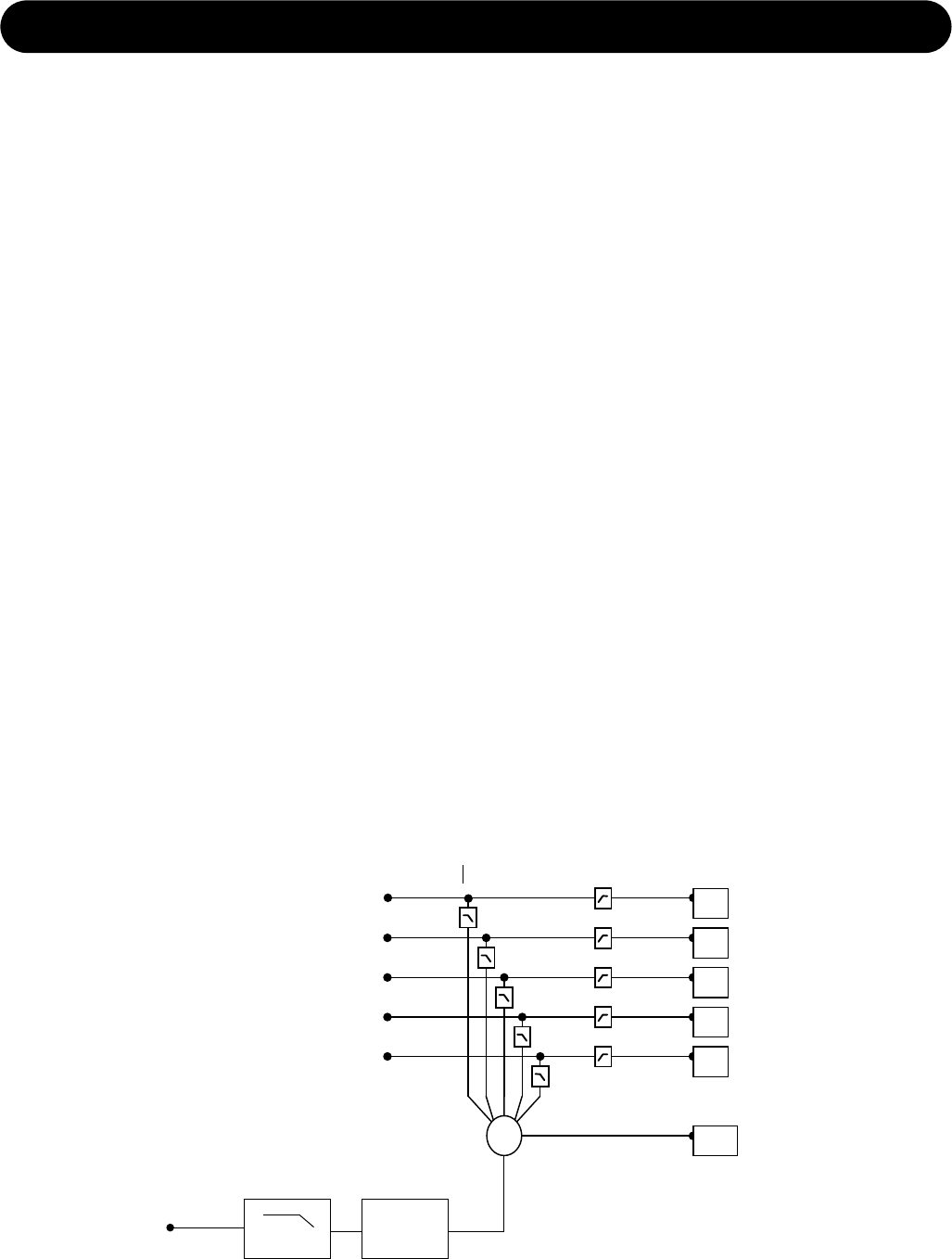
41
THE SUBWOOFER & LFE CHANNEL - BACKGROUND INFO
Checking summing phase cancellation
In a basic 2-channel setup or 5-channel setup (like the ITU-
775) a subwoofer is not specified and is not required. But
making audio production to be played back on consumer
equipment, one has to ensure that the mix will sound right
in this situation. Many consumer setups provide a
subwoofer. Hence it is very important to check what the
summing of the bass is like. If the program material
basically is out of phase, the bass will be cancelled when
summed electrically. But this is not the case if the bass
signals are reproduced by the main monitors and summed
acoustically. A dramatic difference may exist!
Controlling standing waves
It can be very difficult to get two monitors in the right
position in order to prevent the excitation of the standing
waves. But placing five monitors are even more difficult!
Each monitor should play under the same conditions as the
others but that is seldom the case.
Three front monitors can normally be placed away from
disturbing boundaries to prohibit the excitation of the
standing waves. But in small rooms the rear monitors very
often are placed in a corner or on a wall. Having the full
frequency range reproduced in a monitor like that, there
may occur serious problems which results in a poor low
frequency sound distribution in the room.
So this is another reason for using bass management.
Simply: Only one monitor - the subwoofer - has to be
placed in a safe position. The cross-over frequency can be
selected to a value just above the problematic frequency
range.
The LFE Channel
LFE is short for Low Frequency Enhancement or Low Frequency Effects, the first being the original name but the second
being the most correct with regard to its application.
It is also referred to as the .1-channel, which indicates that the frequency range of this channel is only a fraction of the
other channels in a multi channel setup. The actual frequency range is 20 Hz to 120 Hz.
When reproduced the signal is gained by 10 dB compared to the main channels. This provides a possibility of reproducing
occasional high-level low frequency contents without affecting the general level setting of the main channels.
Leading signals to the LFE channel should be evaluated carefully in each case as not all transmission or reproduction
systems may include this channel. In the music mix there is no special reason for using this channel unless you are
recording the 1812 Overture with its canons and all that stuff.
ΣΣ
Sub
L
C
R
Ls
Rs
120 Hz +10 dB
Cross-overs
Low Pass LFE Gain


















